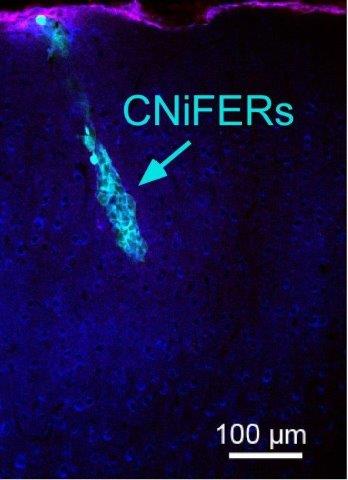FOR IMMEDIATE RELEASE | August 22, 2016
Watching thoughts — and addiction — form in the brain
Note to journalists: Please report that this research is being presented at a meeting of the American Chemical Society.
A press conference on this topic will be held Monday, Aug. 22, at 9:30 a.m. Eastern time in the Pennsylvania Convention Center. Reporters may check in at Room 307 in person, or watch live on YouTube http://bit.ly/ACSlivephiladelphia. To ask questions online, sign in with a Google account.
PHILADELPHIA, Aug. 22, 2016 — More than a hundred years ago, Ivan Pavlov conducted what would become one of the most famous and influential psychology studies — he conditioned dogs to salivate at the ringing of a bell. Now, scientists are able to see in real time what happens in the brains of live animals during this classic experiment with a new technique. Ultimately, the approach could lead to a greater understanding of how we learn, and develop and break addictions.
Scientists will be presenting their work today at the 252nd National Meeting & Exposition of the American Chemical Society (ACS). ACS, the world’s largest scientific society, is holding the meeting here through Thursday. It features more than 9,000 presentations on a wide range of science topics.
The study presented is part of the event: “Kavli symposium on chemical neurotransmission: What are we thinking?” It includes a line-up of global research and thought leaders at the multi-disciplinary interfaces of the Brain Research through Advancing Innovative Neurotechnologies (BRAIN) Initiative with a focus on chemists’ contributions. The effort was launched in 2013 by the Obama Administration to enable researchers to study how brain cells interact to form circuits.
“We developed cell-based detectors called CNiFERs that can be implanted in a mouse brain and sense the release of specific neurotransmitters in real time,” says Paul A. Slesinger, Ph.D., who used this tool to revisit Pavlov’s experiment. Neurotransmitters are the chemicals that transmit messages from one neuron to another.
CNiFERs stands for “cell-based neurotransmitter fluorescent engineered reporters.” These detectors emit light that is readable with a two-photon microscope and are the first optical biosensors to distinguish between the nearly identical neurotransmitters dopamine and norepinephrine. These signaling molecules are associated respectively with pleasure and alertness.
Slesinger, of the Icahn School of Medicine at Mount Sinai in New York, collaborated on the project with David Kleinfeld, Ph.D., at the University of California at San Diego. Their team conditioned mice by playing a tone and then, after a short delay, rewarding them with sugar. After several days, the researchers could play the tone, and the mice would start licking in anticipation of the sugar.
“We were able to measure the timing of dopamine surges during the learning process,” Slesinger says. “That’s when we could see the dopamine signal was measured initially right after the reward. Then after days of training, we started to detect dopamine after the tone but before the reward was presented.”
Slesinger and colleagues will also share new results on the first biosensors that can detect a subset of neurotransmitters called neuropeptides. Ultimately, Slesinger says they’d like to use this sensing technique to directly measure these neuromodulators, which affect the rate of neuron firing, in real time.
Slesinger and Kleinfeld acknowledge funding from the National Institute on Drug Abuse, the National Institute of Biomedical Imaging and Bioengineering and Hoffmann-La Roche.
Other presentations include:
- 21st-century neuroscience: A chemist’s perspective
- Watching neural activity in the dish and in the brain
- In vivo electronic neurotransmitter sensing
Symposium details:
- Time: 1 p.m. to 5 p.m.
- Location: Pennsylvania Convention Center, Room 105B
The American Chemical Society is a nonprofit organization chartered by the U.S. Congress. With nearly 157,000 members, ACS is the world’s largest scientific society and a global leader in providing access to chemistry-related research through its multiple databases, peer-reviewed journals and scientific conferences. Its main offices are in Washington, D.C., and Columbus, Ohio.
Media Contact
ACS Newsroom
newsroom@acs.org
High-resolution image






